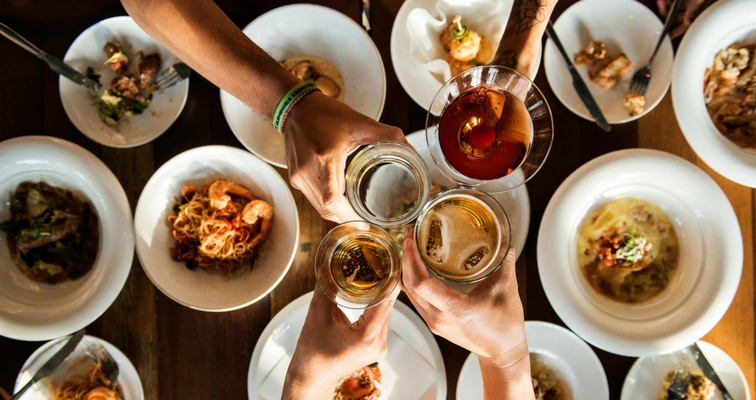The Fragmented Journey of Food and Beverage Consumers 5/17/2018
In the 1970’s, about two thirds of U.S. food and beverage spend was allotted to grocery store purchasing. Fast-forward to today, and we find that consumers are spending 50% of their food budget dining out rather than on a home-cooked meal. While share of budget is shifting, it’s not as straightforward as choosing a restaurant menu over mom’s meat loaf, we’re seeing the rise of crossover and new format competitors such as meal kit companies, juice bars, snack-as-meal options, and e-commerce. Here, we look at how the lines are blurring and where the opportunities are for food and beverage marketers.
The Netflix Philosophy
We’re evolving into an “on-demand” society in nearly all aspects of our culture, so it’s not surprising that it is crossing over into the way we eat. Millennials, of course, are leading this shift—more than 40% say they consume food within an hour of purchase and about two thirds of their food purchases are made outside of grocery stores. Millennials are on the cutting edge of emerging food channels, and most willing to experiment with digital tools, such as in-store apps, alternative delivery methods (Uber Eats, Grubhub, Seamless). Convenience is key and small format stores offer speedy service, but not at the price of their health—Millennials seek high quality, innovative flavor, and nutrient-rich premium foods at an affordable price.
The New Nuclear Family
In 1970, fewer than one-third of households with kids were headed by parents who both worked full-time. Today, the workforce participation rate for married mothers is almost 68% and that rises to 76% for separated, divorced, or never-married mothers. The role of the mother as the primary meal planner, shopper, and cook is changing and men are increasingly sharing responsibility for these tasks. While Millennials are more likely to use digital meal delivery services, Gen X consumers with families account for 51% of meal kit spending. These consumers are looking for easy solutions to get dinner on the table fast and willing to pay for the convenience and freshness that meal kits offer. This cohort is also more likely than Millennials or Boomers to order from online grocery retailers and use apps and social tools for meal planning.
The Evolving Role of E-Commerce
Forty-percent of consumers say they expect to increase their frequency of online grocery shopping in 2018 and it’s not just for convenience. Despite being optimistic about the economy, almost one third of consumers say they have difficulty affording groceries and use the web to shop around for the best deal. Although online pure plays like Jet or Amazon generate a lot of buzz, 40% of consumers say they use the “click and collect” option at their local grocery store to save on shipping fees. While these services are great for consumers, they often drive a “race to the bottom” price war for brands—51% of consumers compare prices on retailer websites to find the lowest prices on items. Additionally, more than half of consumers say that they are less likely to make impulse purchases online. With that in mind, how can marketers get their product in shoppers’ virtual carts?
Social media allows shoppers to share and learn before investing their dollars. Sixty-three percent of Millennials and 61% of Gen X’ers say they will switch to a new brand if they’ve read a good online review and more than a third of both Millennials and Gen X’ers say they like to share opinions about food brands on social media. Social campaigns that encourage engagement about products can help drive online conversion. But what about loyalty? In a saturated marketplace, marketers can drive loyalty by participating in subscription services for frequently purchased items. About a third of Millennials and Gen X’ers indicate interest in these types of services.
We are experiencing a period of disruption in the food and beverage industry. Consumers are shifting toward digital tools to discover and shop, and increasingly busy lifestyles have impacted shopper priorities. Additionally, expanded traditional “in-home” or “out-of-home” channels and occasions have created a more complex landscape. Women’s Marketing offers deep insights into consumer trends driving these shifts. Contact us to learn more about our suite of marketing services.
Check out more food and beverage trends in Women's Marketing latest report

